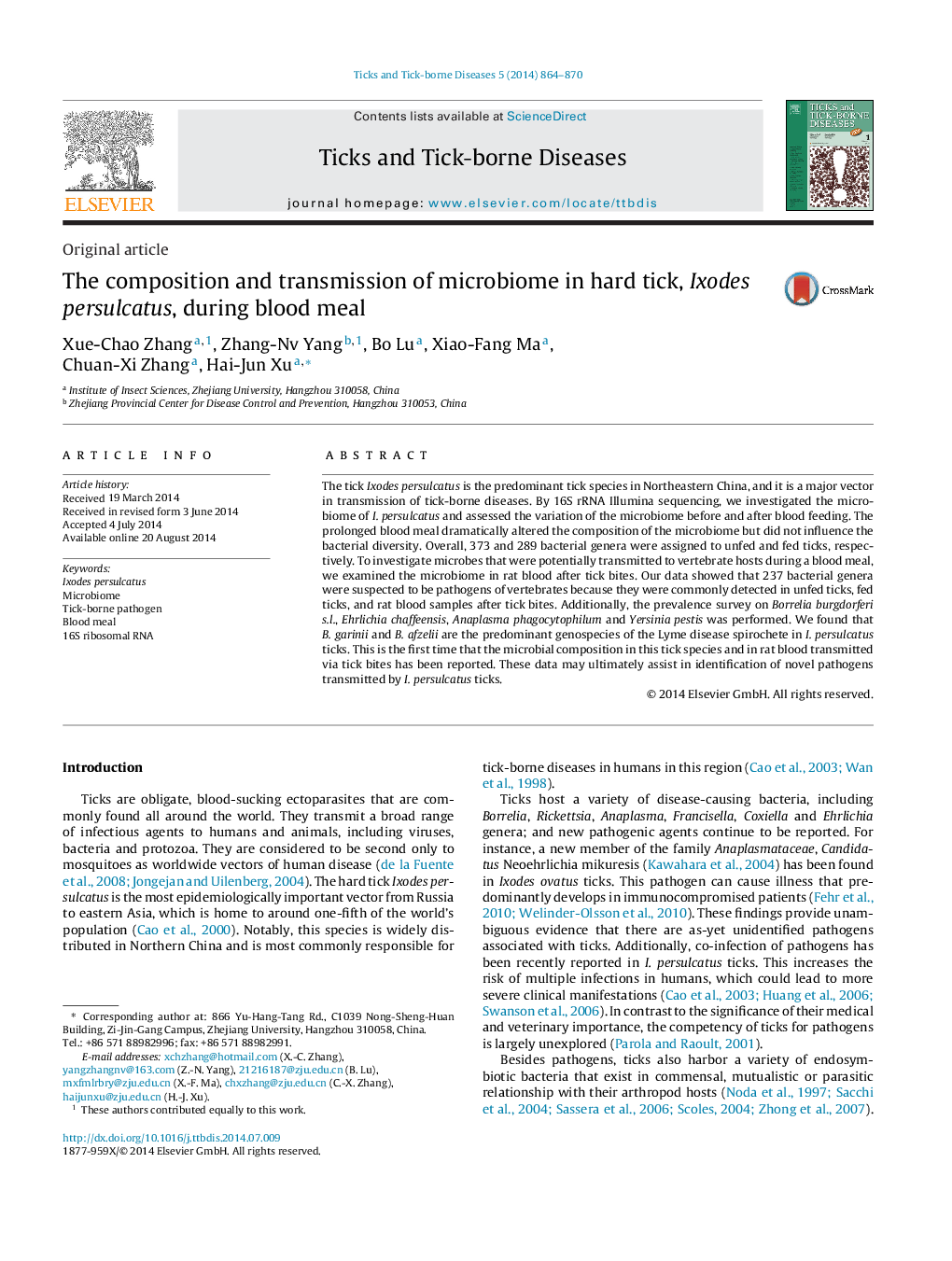| Article ID | Journal | Published Year | Pages | File Type |
|---|---|---|---|---|
| 2473998 | Ticks and Tick-borne Diseases | 2014 | 7 Pages |
The tick Ixodes persulcatus is the predominant tick species in Northeastern China, and it is a major vector in transmission of tick-borne diseases. By 16S rRNA Illumina sequencing, we investigated the microbiome of I. persulcatus and assessed the variation of the microbiome before and after blood feeding. The prolonged blood meal dramatically altered the composition of the microbiome but did not influence the bacterial diversity. Overall, 373 and 289 bacterial genera were assigned to unfed and fed ticks, respectively. To investigate microbes that were potentially transmitted to vertebrate hosts during a blood meal, we examined the microbiome in rat blood after tick bites. Our data showed that 237 bacterial genera were suspected to be pathogens of vertebrates because they were commonly detected in unfed ticks, fed ticks, and rat blood samples after tick bites. Additionally, the prevalence survey on Borrelia burgdorferi s.l., Ehrlichia chaffeensis, Anaplasma phagocytophilum and Yersinia pestis was performed. We found that B. garinii and B. afzelii are the predominant genospecies of the Lyme disease spirochete in I. persulcatus ticks. This is the first time that the microbial composition in this tick species and in rat blood transmitted via tick bites has been reported. These data may ultimately assist in identification of novel pathogens transmitted by I. persulcatus ticks.
